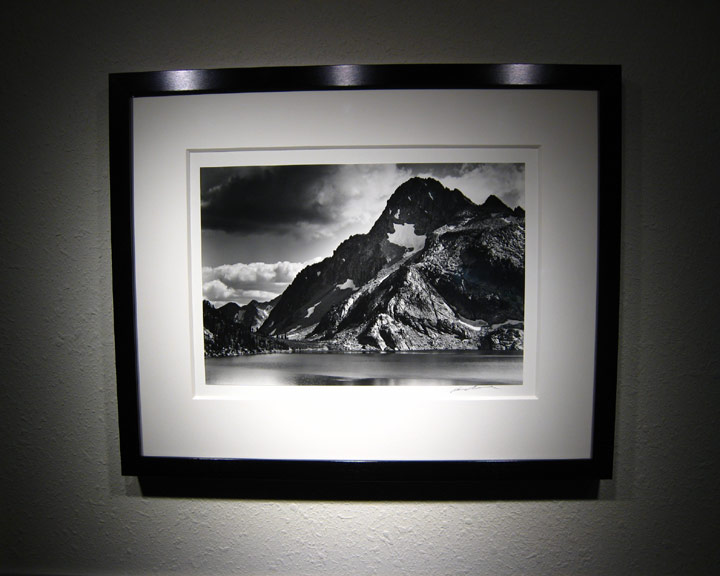Range of Light Photography | Range of Light Photography™ | Fine Art Prints | Display/Care
Display/Care
A signed, limited edition Range of Light photograph is a one-of-a-kind irreplaceable work of art. It must be protected from possible injury and the elements (and is best presented) by placing it in a suitable frame under appropriate glazing, away from direct sunlight. Matted and unframed prints come in a minimally protective, non-archival, polyethylene bag which should not be used for long term storage. Archival tissue or paper is inserted between the mounted GSP and its beveled window for protection of the GSP during transport. This interleave may be retained for storage or portfolio use if the print remains unframed. GSPs must not be allowed to be in contact with a frame’s glazing without the use of the included beveled window. Use cotton gloves when handling prints, and always only by the edges to avoid fingerprint damage to both print and mat. Fine prints may have minor imperfections and variances characteristic of any handmade artistic endeavor. Prints are permanently attached to the mounts in a dry-mounting process — and should remain so indefinitely. In the unlikely event that the print becomes detached from the mounting board do not attempt to reattach with adhesive or by any other means. Take the mounted print to a qualified art restorer or photo technician for reattachment. A properly handled and displayed Range of Light GSP should last for generations.

FRAMING
Range of Light fine art gelatin silver prints (GSP) are best displayed framed, under strong, daylight-balanced spot lighting. Inert, metal frames are preferred, with non-glare acrylic glazings to enhance the beauty and permanence of the fine art print. Make certain the frames chosen can comfortably accommodate the one-half to three-quarter inch depth required for the the 4-ply print mount, the 8-ply window, and quarter inch acid free backing board (not included) required for proper framing. Acid free paper skinned foam core, available at most framing stores, is best used as backing board for the archivally framed print. Acrylic glazings are preferable. Glass glazings, unless of the Corning Gorilla type, are no longer recommended due to their weight and ease of breaking. Please consult an experienced local framing specialist for proper installation of fine art photographic prints.
LIGHTING
Lighting is best accomplished with daylight-balanced spots. Suitable varieties may now be found at hardware stores, both in incandescent (halogen) and LED types. Range of Light Photography uses Solux 3500K halogen spots exclusively, to bring out the maximum brilliance and detail of its GSPs in its fixed gallery presentations. Never leave any fine art print in direct sunlight.









